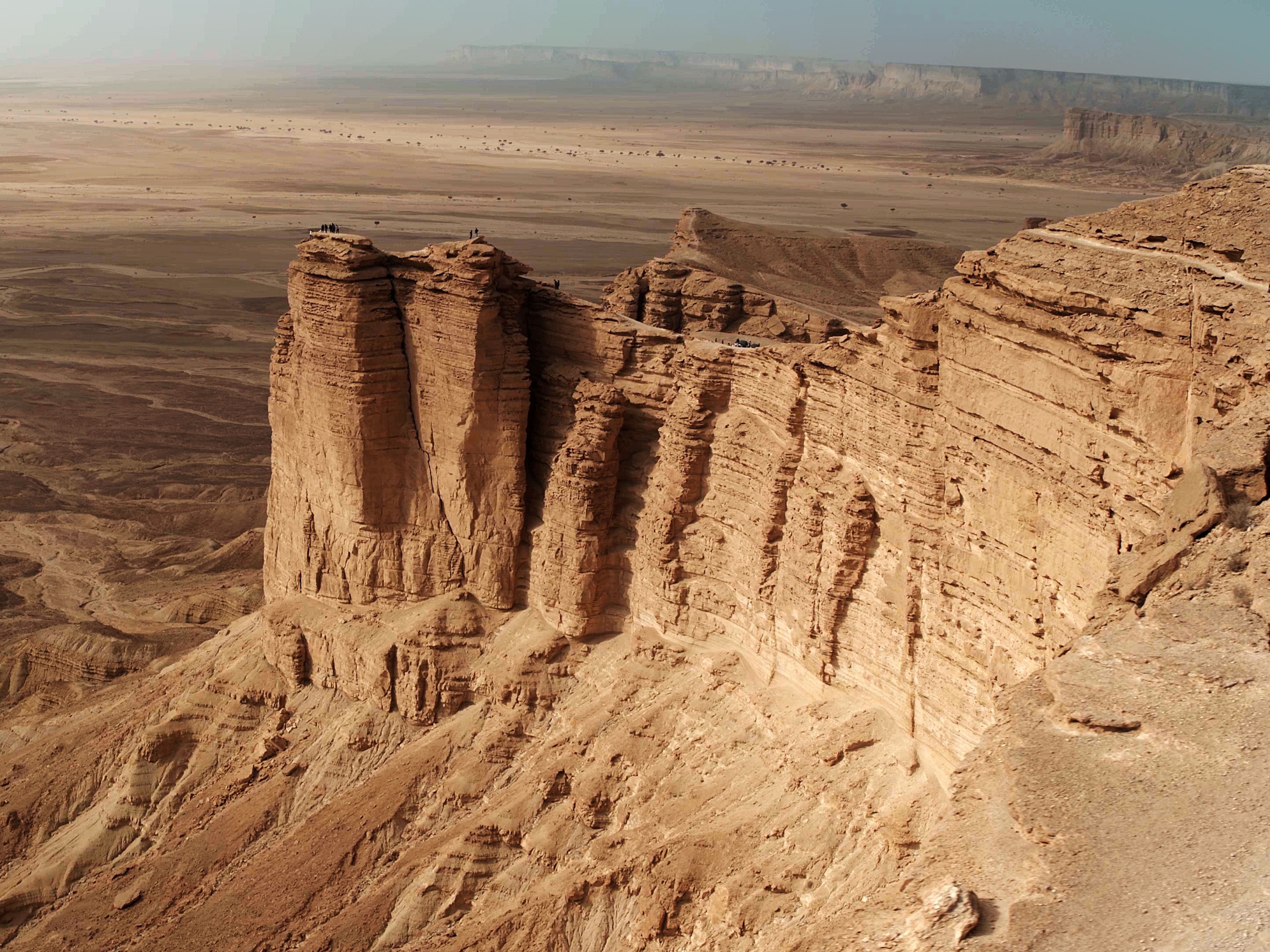From the northern reaches of Europe and Asia, across the Arabian desert, and southwards into the horn of Africa, the saker falcon migrates throughout late fall and early winter.
Thousands of years ago, nomadic desert-dwelling Arab tribes trapped and trained these raptors as hunting partners, catching food to feed their families and then releasing them back into the wild at the end of the season.
Today, the saker falcons’ migration is marked with a different tradition: In Saudi Arabia, hundreds upon hundreds of falconers from around the world gather with their birds, paying homage to this ancient practice’s roots.
According to Hussam A. Al-Huzaimi, chief executive officer of the Saudi Falcons Club, the 2017 launch of the annual King Abdulaziz Falconry Festival was just another milestone in the upward trend of interest in modern-day falconry.
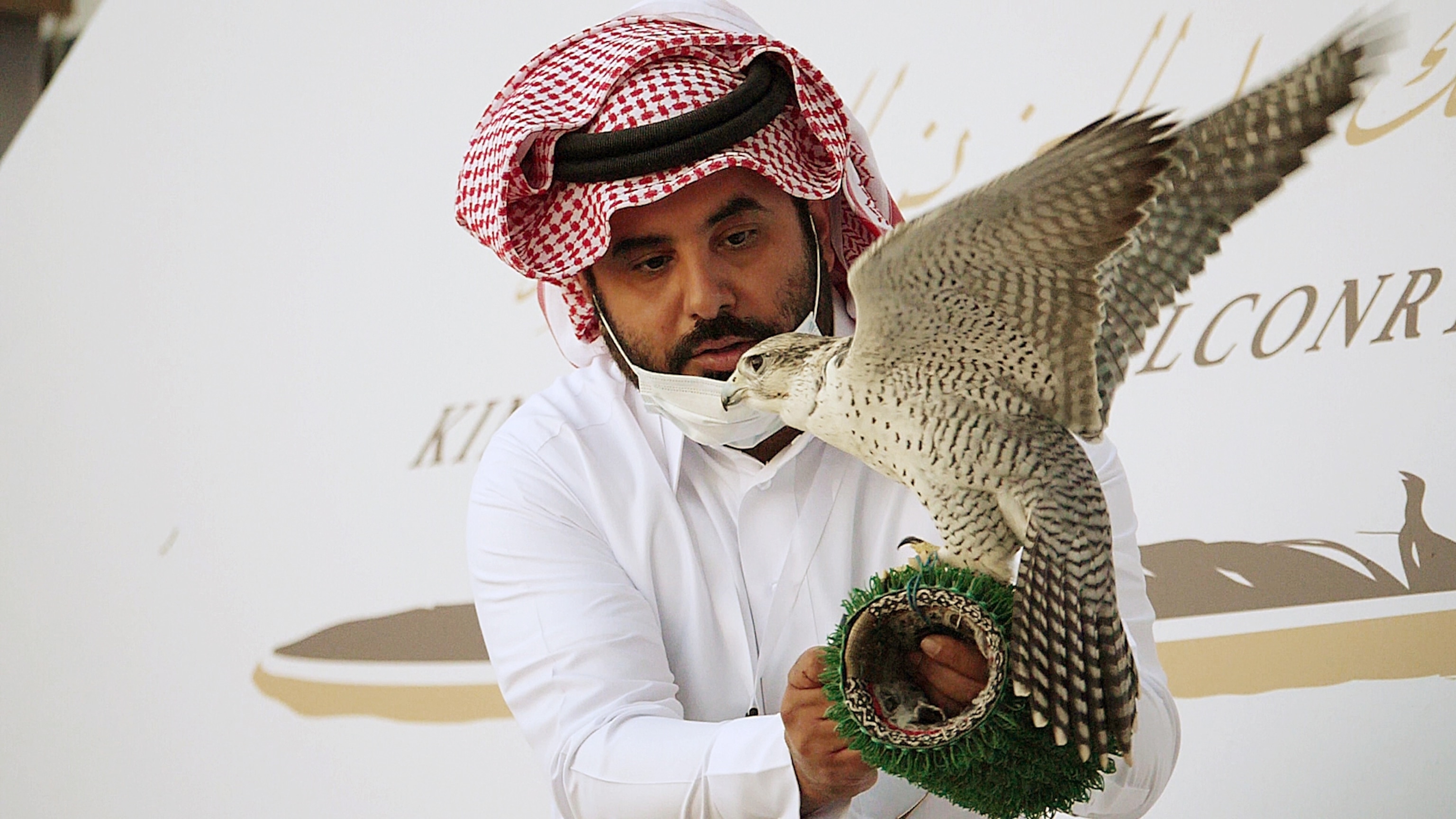
“More people are taking this hobby they learned from their grandfathers and sharing it with a new generation,” Al-Huzaimi says over Zoom from Riyadh, where planning for the 2021 festival is presently underway. But falconry faces a challenge.
“Some species of falcon have become endangered in some parts of the world,” he says. In some cases, the species they traditionally prey upon — like the ground bird the houbara bustard — also face extinction. “This hobby is about continuance of an ancient tradition — and its survival relies on initiatives, policies and innovative practices that ensure sustainability. We wanted a way to help preserve this heritage of falconry, and also, to create a platform for the practice of falconry in a sustainable manner,” Al-Huzaimi says. “How did we do this? We started having races — competitive, high-stakes falcon races.”
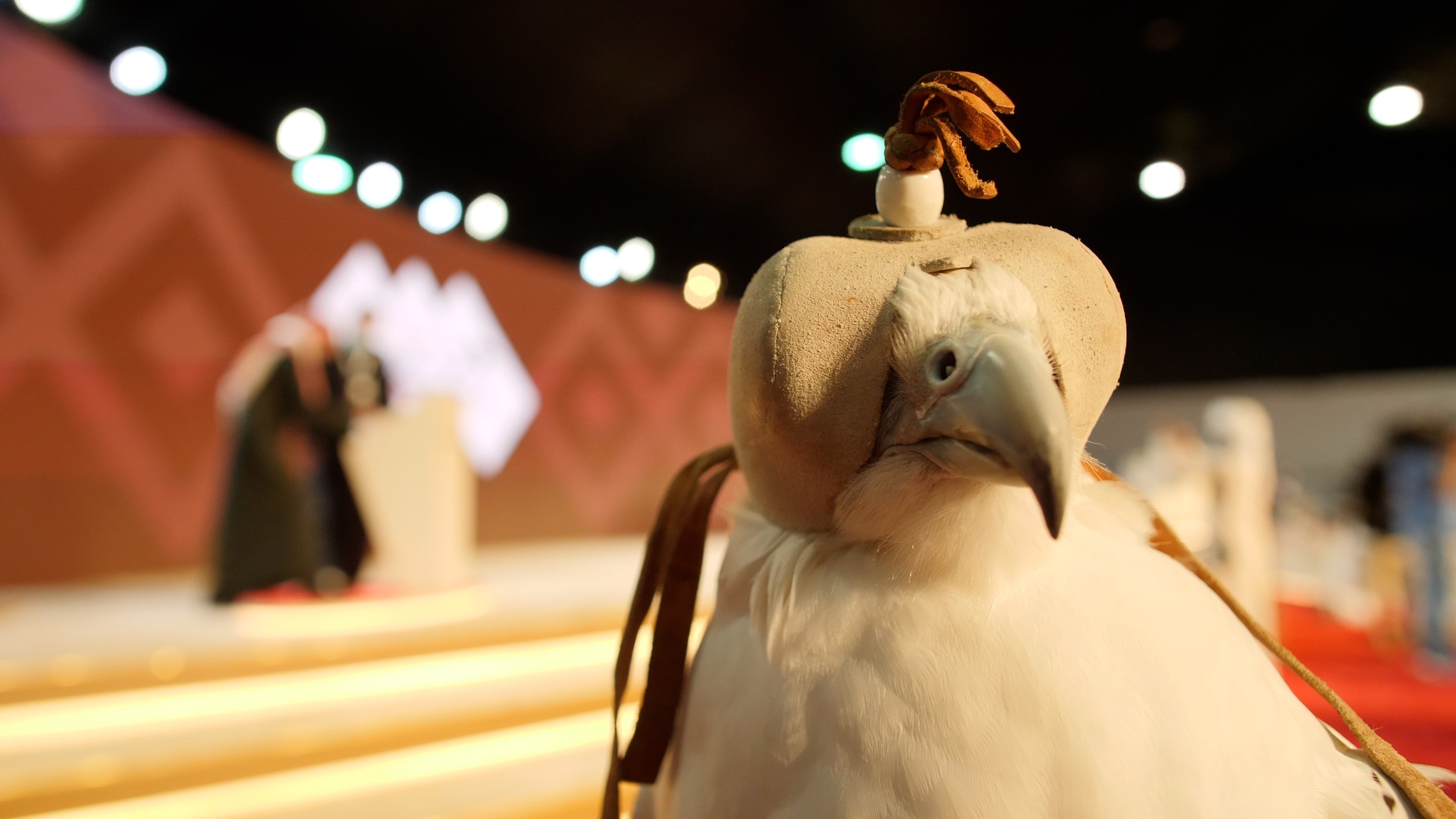
Falconer Barghash Al-Mansouri taking part in the race at KAFF. The best-performing falcons and their owners will take home millions of dollars in prize money.
Falconry for the future
At the King Abdulaziz Falconry Festival, the very same falconry training and husbandry techniques developed by ancient civilizations for subsistence hunting are now being applied to this new form of the pastime: racing.
To Al-Huzaimi, it’s “the ultimate way of practicing falconry.” His ancestors may have disagreed — but the world is a different place than it was millennia ago, he says, and especially in the Middle East, where tens of thousands of falconers fly multiple birds each, maintaining a balance between civilization and wildlife calls for new approaches. The Saudi Falcons Club, which hosts the festival, see the event as a new chapter in the centuries-long history of wildlife conservation efforts led by falconers — a history stretching back to at least the 13th century. Today, the falconry community’s conservation initiatives span the world, from the U.S. to Australia, across Europe, Asia and the Middle East.
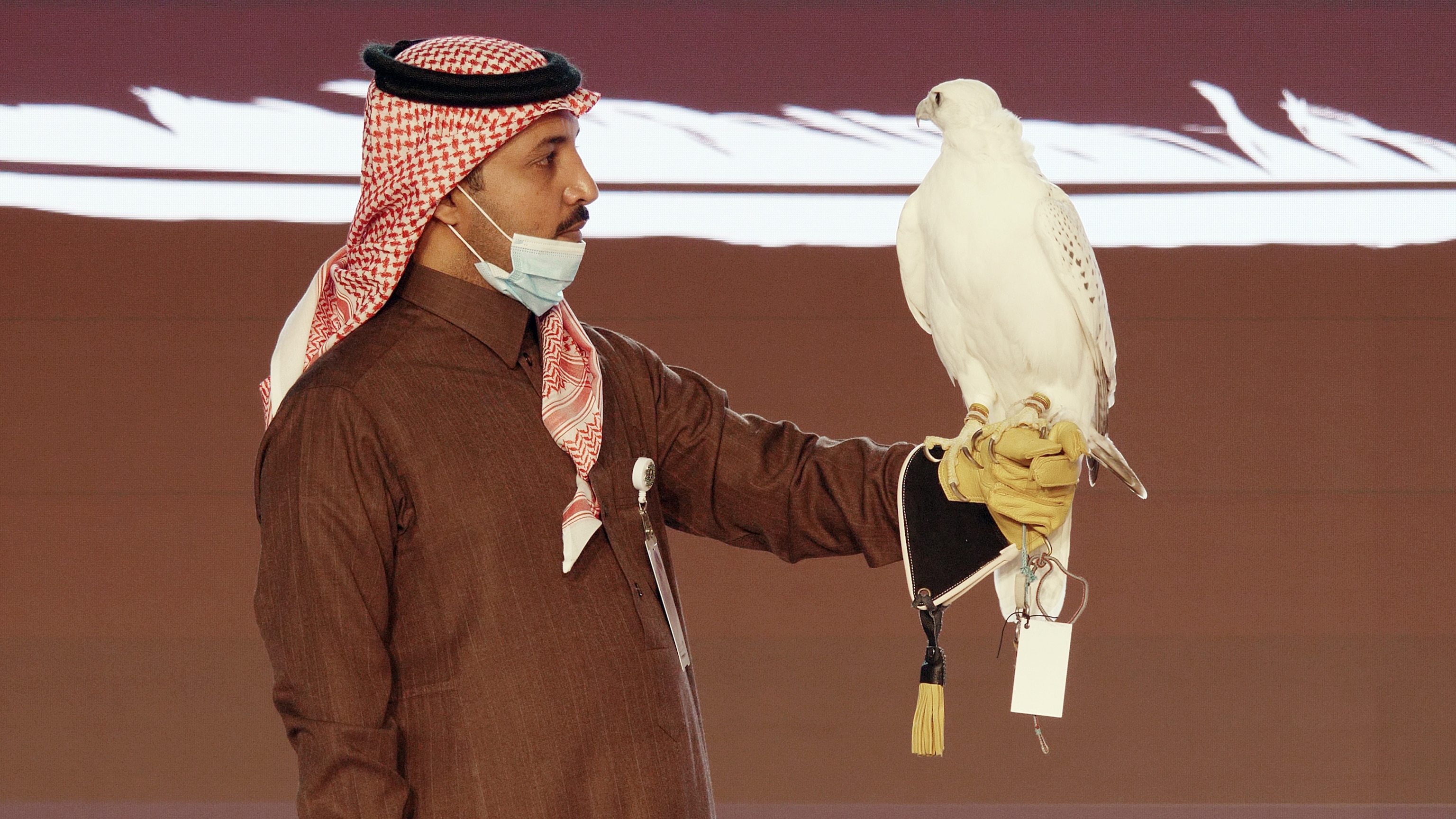
In Saudi Arabia, the government wildlife authority regulates falconry hunting to protect and rehabilitate wild prey populations. Other initiatives focus on raptors themselves: One, the SFC’s Hadad program, encourages Middle Eastern falconers to donate wild falcons, working with ecologists to safely return these birds to their native habitats. So far, Hadad has received more than 100 wild birds, donated by their owners to be released back into the wild. Meanwhile, Al-Huzaimi says, the festival exclusively admits falcons bred in captivity to participate in order to discourage the capture of wild falcons.
Ancient traditions meet pioneering technology
Increasingly, falcons — including sakers, peregrines and hybrids including the gyr shaheen, gyr pure, gyr taba, and gyr qarmoucha — are being bred and trained not to hunt, but to race. At the KAFF, these races are 400-meter sprints which test the birds’ reaction time, vision and speed. Owners of the best-performing participants stand to win millions of dollars in prize money.
Winning birds are tested to confirm the absence of performance-enhancing drugs, just like in the Olympics, Al-Huzaimi says, and, just like in the Olympics, this millennia-old artform collides with modern technology, like microchip tagging and laser timing systems.
At the finish line, third-party referees use high-tech photo finish technology, snapping thousands of frames per second to determine the winner, just as judges determine the winners of Olympic speed events.
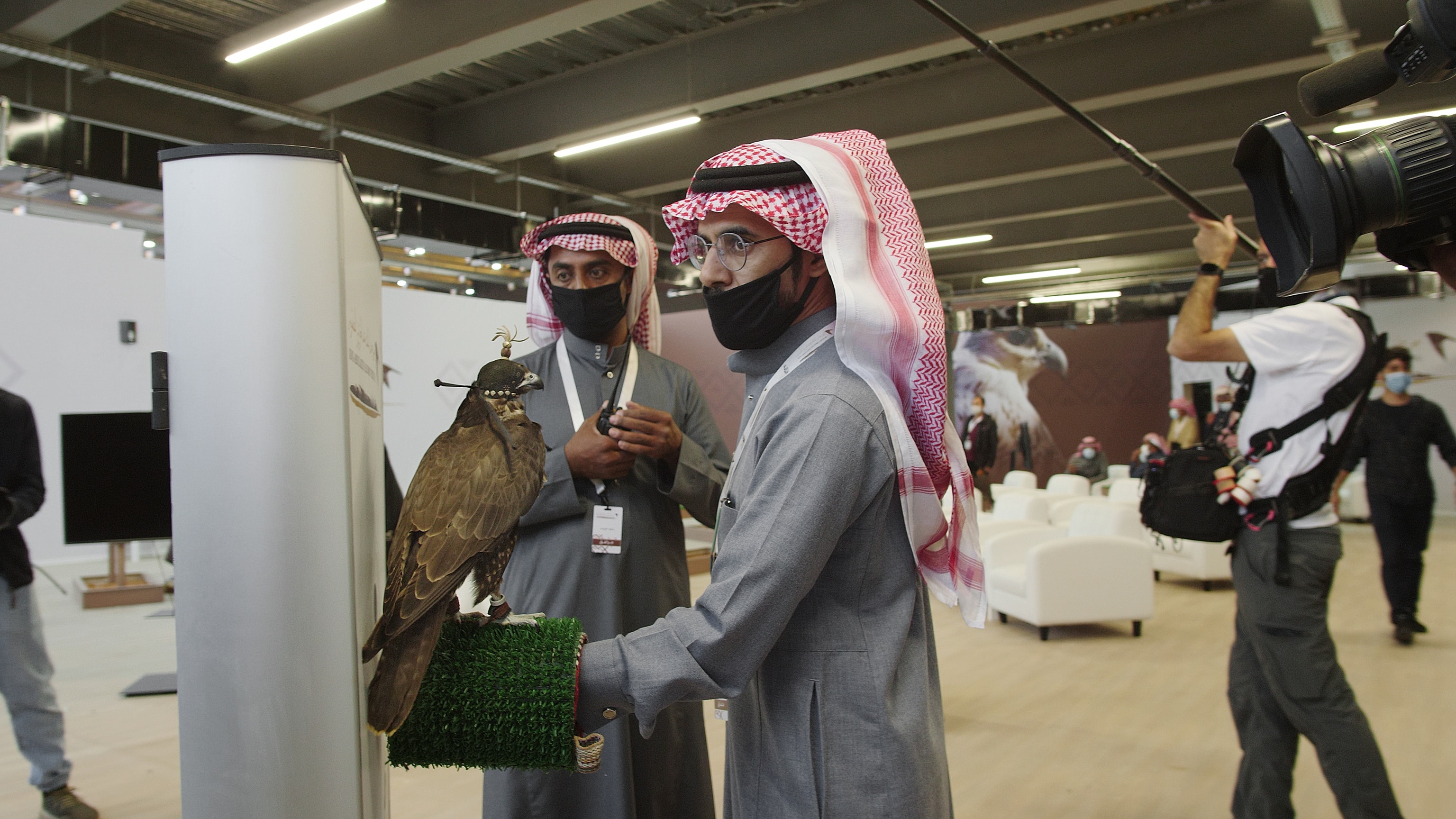
Falconry events like this beauty competition at KAFF are growing increasingly popular in the Middle East. Over the past four years, KAFF has repeatedly broken its own participation records, drawing over 2,000 falcons to its races and pageants in 2019.
'The Grand Prix of falconry'
Year after year for the past four years, KAFF has broken its own participation records, according to Al-Huzaimi, drawing over 2,300 falcons in 2019 and even finding a place in the Guinness Book of World Records.
In the future, he envisions the festival as “the Grand Prix of falconry,” showcasing not just races but the art, culture and customs of falconry, experiences that transport visitors to Arabia’s ancient past, and new layers of education and youth involvement the SFC believes will help falconry thrive for many generations to come.
Excitement around the event continued to grow even during the coronavirus pandemic at the 2020 festival, drawing falconers from across Europe and Asia to participate. Festival organizers anticipate an even bigger response in 2021.
Admission is free, and “non-falconers” flock to the races, too — although Al-Huzaimi questions whether there is truly any such a thing as a “non-falconer”:
“In a way, everybody is a falconer,” he says. “If you go back thousands of years, to your ancestors, you will see someone in your family has been a falconer.” In this way, he says, this “cultural and civilizational heritage” connects us all.
Find out more about the intricacies of training falcons, as well as conservation efforts currently underway to preserve these fierce and majestic creatures, here.

